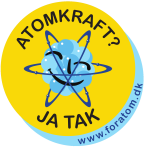
located in Japan, was comprised of six reactor units that utilized generation 2 (Gen II) boiling water reactors (BWR) from the 1960s [1]. These reactors were designed with a containment building of the BWR-MARK-1 type, a standard feature in most nuclear power plants, except for Chernobyl [2].
On the day of the accident, three units (1, 2, and 3) were operating, while unit 4 was undergoing a fuel change. Units 5 and 6 had been taken out of service for routine maintenance before the earthquake [3].
The Fukushima disaster was catastrophic on March 11, 2011, when a massive earthquake and tsunami struck the region. The resulting damage caused a loss of power to the reactors, leading to a series of explosions and meltdowns that released radioactive materials into the environment.
The incident had far-reaching consequences, including the displacement of thousands of people and the contamination of the surrounding area. It also sparked a global conversation about the safety and sustainability of nuclear power.
Despite the challenges, the Fukushima Daiichi complex faces, efforts are underway to clean up and decommission the site. This process will take decades and require significant resources and expertise.
In conclusion, the Fukushima disaster serves as a stark reminder of the potential risks associated with nuclear power and the importance of implementing robust safety measures to prevent such incidents from occurring in the future.
Sources
- GE BWR – Wikipedia
- https://www.nrc.gov/docs/ML1232/ML12326A344.pdf?fbclid=IwAR3EJGWlfGvivQ0Z9FjaJNUL10SgyuOnzRUJPJFt0S6c7LntLxl9om1JoBQ
- https://www-pub.iaea.org/MTCD/Publications/PDF/AdditionalVolumes/P1710/Pub1710-TV1-Web.pdf?fbclid=IwAR392Q6X9N9_ZpK92gYjm0G8vso50OSYZ05VJeE9l3wdyC5M6ptrK2Na2b8




